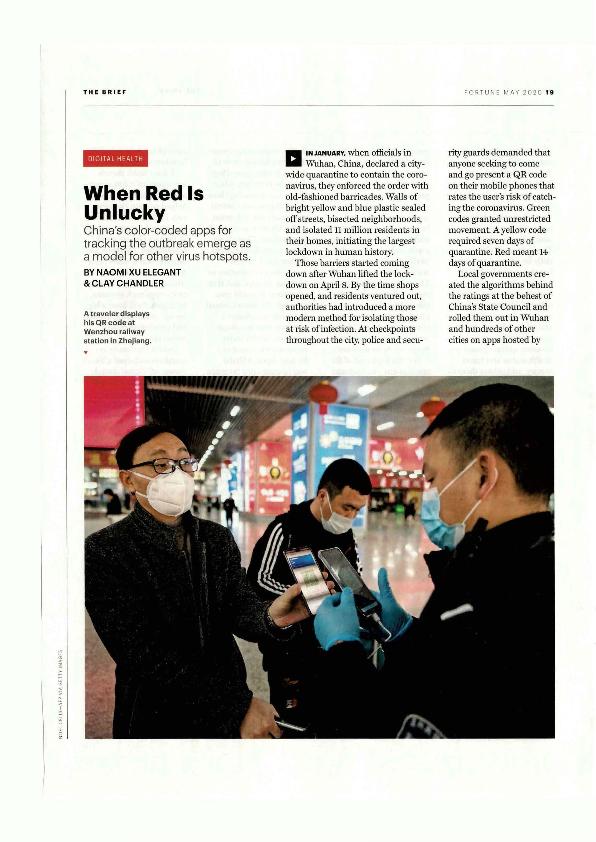China's apps for tracking the outbreak prove a model for other hotspots

Contenido multimedia no disponible por derechos de autor o por acceso restringido. Contacte con la institución para más información.
| Tag | 1 | 2 | Value |
|---|---|---|---|
| LDR | 00000cab a2200000 4500 | ||
| 001 | MAP20200024392 | ||
| 003 | MAP | ||
| 005 | 20200723144553.0 | ||
| 008 | 200720e20200501nld|||p |0|||b|eng d | ||
| 040 | $aMAP$bspa$dMAP | ||
| 084 | $a922.13 | ||
| 100 | $0MAPA20200016588$aXu Elegant, Naomi | ||
| 245 | 1 | 0 | $aChina's apps for tracking the outbreak prove a model for other hotspots$cNaomi Xu Elegant, Clay Chandler |
| 520 | $aIn january, when officials in Wuhan, China, declared a citywide quarantine to contain the coronavirus, they enforced the order with old-fashioned barricades. Walls of bright yellow and blue plastic sealed off streets, bisected neighborhoods, and isolated 11 million residents in their bornes, initiating the largest lockdown in human history. Those barriers started coming down after Wuhan lifted the lockdown on April 8. By the time shops opened, and residents ventured out, authorities had introduced a more modern method for isolating those at risk of infection. At checkpoints throughout the city, police and security guards demanded that anyone seeking to come and go present a QR code on their mobile phones that rates the user's risk of catching the coronavirus. Green codes granted unrestricted movement. A yellow code required seven days of quarantine. Red meant 14 days of quarantine. | ||
| 650 | 4 | $0MAPA20120009134$aAplicaciones móviles | |
| 650 | 4 | $0MAPA20200005599$aCOVID-19 | |
| 650 | 4 | $0MAPA20200005391$aCoronavirus | |
| 650 | 4 | $0MAPA20080552022$aPandemias | |
| 650 | 4 | $0MAPA20080586546$aNuevas tecnologías | |
| 650 | 4 | $0MAPA20100046982$aControl sanitario | |
| 651 | 1 | $0MAPA20080644178$aChina | |
| 700 | 1 | $0MAPA20200016601$aChandler, Clay | |
| 773 | 0 | $wMAP20077100192$tFortune$dAmsterdam : Time Warner Publishing, 1999-$x0738-5587$g01/05/2020 Volumen 181 Número 5 - 1 mayo 2020 , p. 19-21 |

